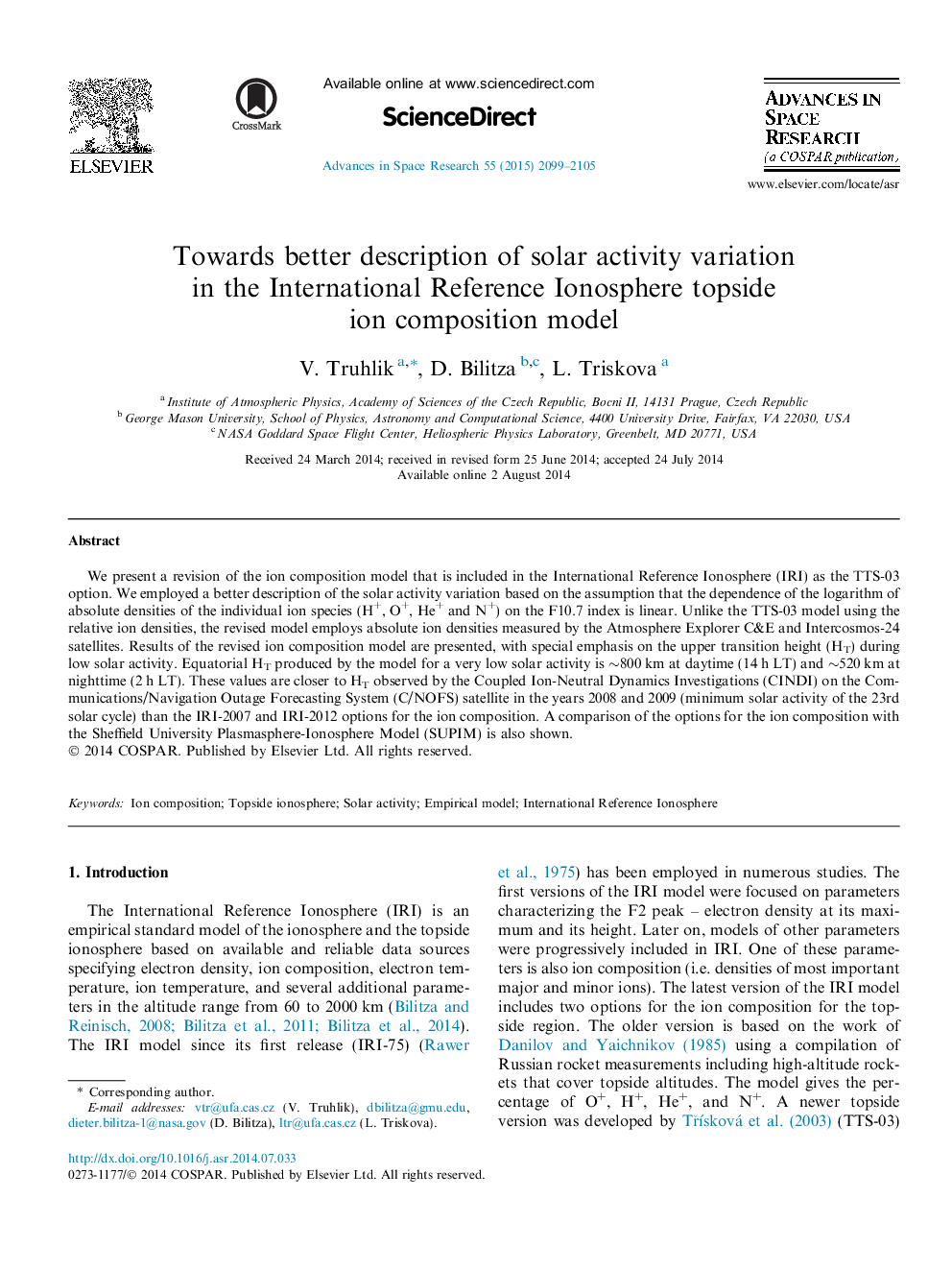| Article ID | Journal | Published Year | Pages | File Type |
|---|---|---|---|---|
| 1764045 | Advances in Space Research | 2015 | 7 Pages |
Abstract
We present a revision of the ion composition model that is included in the International Reference Ionosphere (IRI) as the TTS-03 option. We employed a better description of the solar activity variation based on the assumption that the dependence of the logarithm of absolute densities of the individual ion species (H+, O+, He+ and N+) on the F10.7 index is linear. Unlike the TTS-03 model using the relative ion densities, the revised model employs absolute ion densities measured by the Atmosphere Explorer C&E and Intercosmos-24 satellites. Results of the revised ion composition model are presented, with special emphasis on the upper transition height (HT) during low solar activity. Equatorial HT produced by the model for a very low solar activity is â¼800 km at daytime (14 h LT) and â¼520 km at nighttime (2 h LT). These values are closer to HT observed by the Coupled Ion-Neutral Dynamics Investigations (CINDI) on the Communications/Navigation Outage Forecasting System (C/NOFS) satellite in the years 2008 and 2009 (minimum solar activity of the 23rd solar cycle) than the IRI-2007 and IRI-2012 options for the ion composition. A comparison of the options for the ion composition with the Sheffield University Plasmasphere-Ionosphere Model (SUPIM) is also shown.
Keywords
Related Topics
Physical Sciences and Engineering
Earth and Planetary Sciences
Space and Planetary Science
Authors
V. Truhlik, D. Bilitza, L. Triskova,
